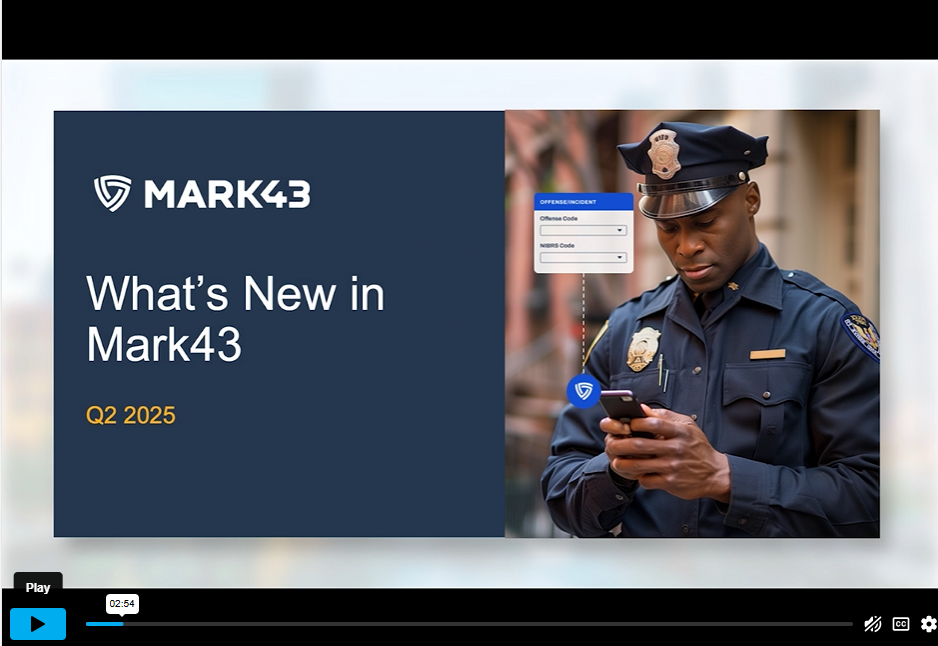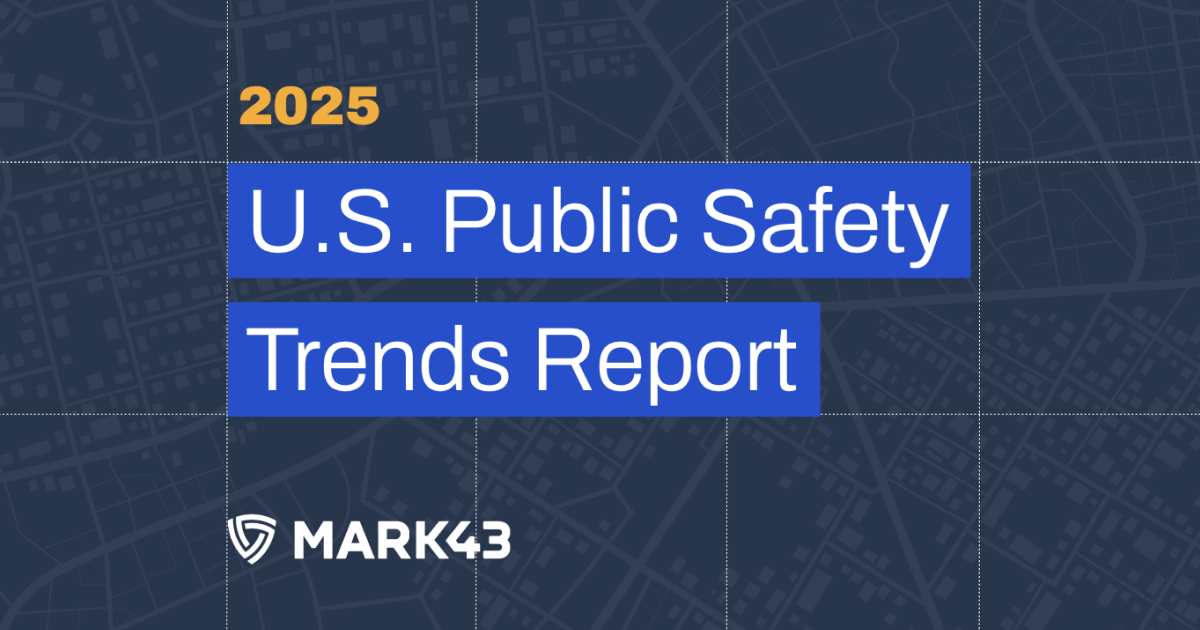
Advancements in technology have made it easier than ever for public safety agencies to adapt to changing demands and implement modern tools that satisfies the needs of the agency and the community. However, long-term sustainment depends on a thoughtful and strategic implementation.
Mark43 has partnered with more than 200 local, state, and federal public safety agencies, helping to transform how first responders use technology to respond, engage and serve the community. We have seen firsthand how leading agencies have successfully managed the people and organizational side of their deployments .
Here are 5 things agencies can do to set themselves up for success when implementing new technology.
- Pick the right project team. This is critical to the success of the project. A project team with the greatest impact is a project team supported by leadership and representative of internal stakeholders who understand the challenges that are important to them. A project team should include:
- A project manager. These are the main drivers of the project. They should be experienced at managing complex initiatives and vendor relationships and can leverage resources within the agency.
- Change advocates and department super users. These are agency members who are trusted to make decisions, who are connected and respected within the agency, and who are open minded and excited about change.
- A business analyst. This is a member who understands the current state of operations and how a workflow could be better optimized with the new technology. Having someone whose sole focus is evaluating internal processes and aligning/optimizing with the new technology team can greatly help with documentation and finding efficiencies.
- Balance. Agencies should make sure there is an even distribution between sworn members and civilian staff. Each side brings special expertise and will challenge each other.
- Steering Committee. This will help provide guidance to the project team, ensure cohesion, and provide an avenue for any escalations that may need attention over the course of the implementation.
- Enable the core team to make decisions. Clearly define team member roles and authority to facilitate efficient decision making.
- Developing a project charter that outlines the primary goals and empowering certain user groups to make decisions helps the agency avoid “paralysis by analysis” whereby even a minor issue delays the entire project.
- Keep the core project team nimble and small to ensure faster decision making
- Most successful project teams are given carte blanche decision-
- Embrace change management. It’s critical for everyone impacted by change to understand why a shift is taking place. Communication
sabout the project and the impact of the transition to stakeholders is at the core of change management, but is often overlooked or seen as a less important topic to focus on during the implementation. The most successful agencies bring this topic to the front and center of the deployment process. Here are some strategies used that can make for a successful transition:
- Review the needs of each stakeholder group.
- Create a message that speaks to each stakeholder group (it should look different from patrol to records to detectives).
- Make the message real. Go beyond simple cheerleading and discuss the realities of the new system .
- Incorporate activities around each major project milestone to engage stakeholders and ensure communications are having a positive impact
- Devote resources to testing and training: Testing, training and preparing for launch are often the most resource intensive and challenging phases of a deployment.
- Testing and training should not be rushed and are opportunities to develop internal subject matter expertise that will support the agency during launch.
- Schedule training as close to launch as possible to ensure knowledge retention
- Create a process for users to raise questions and issues.
- Utilize your Subject Matter Experts to support their shifts during launch, acting as the first line of defense to field questions from users.
- Actively prepare for go-live. A smooth go-live week is possible, so don’t be afraid to aim for one. Go-live dates will always involve anticipation and some minor bumps, but they should not be high-stress days for agency staff.
- Communicate clearly where users can go for support.
- Make sure there is a list of subject matter experts and publish their schedules so people know where to go for questions.
- Clearly communicate an escalation process and staff available to answer questions.
- Send out training bulletins as FAQs came up.
Community members expect their public safety agencies to use modern technology. The challenge for public safety agencies is to ensure that the implementation and deployment of that new technology is a successful one. Public safety agencies who take a thoughtful approach to implementing and deploying any new technology will not only be in the best position to succeed, but will have lasting impact on their communities.








